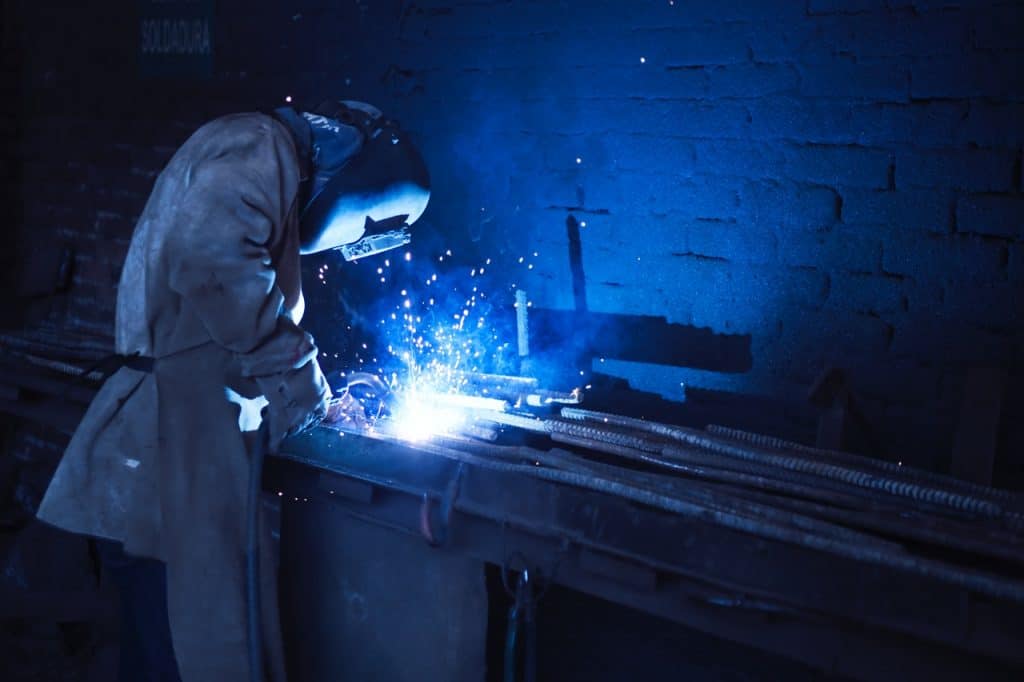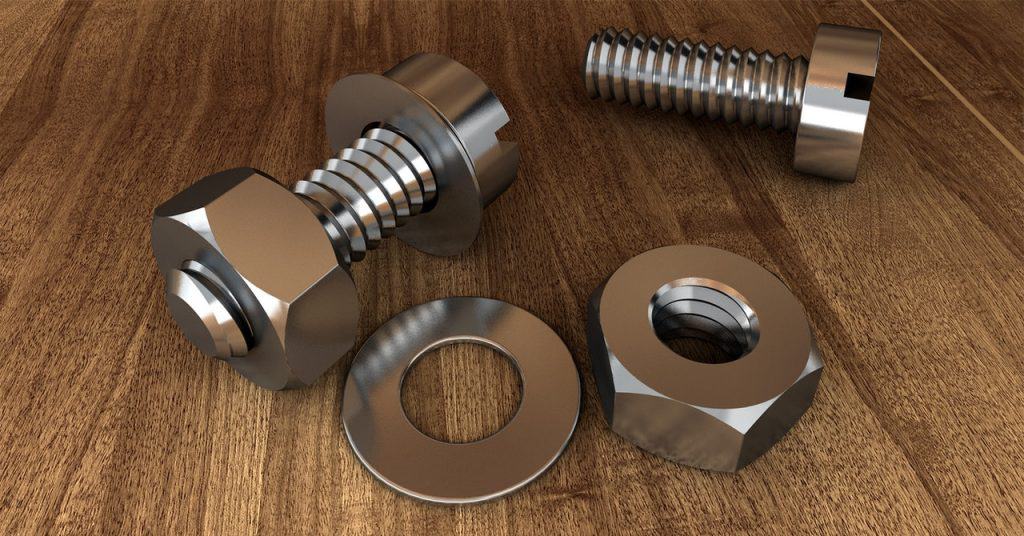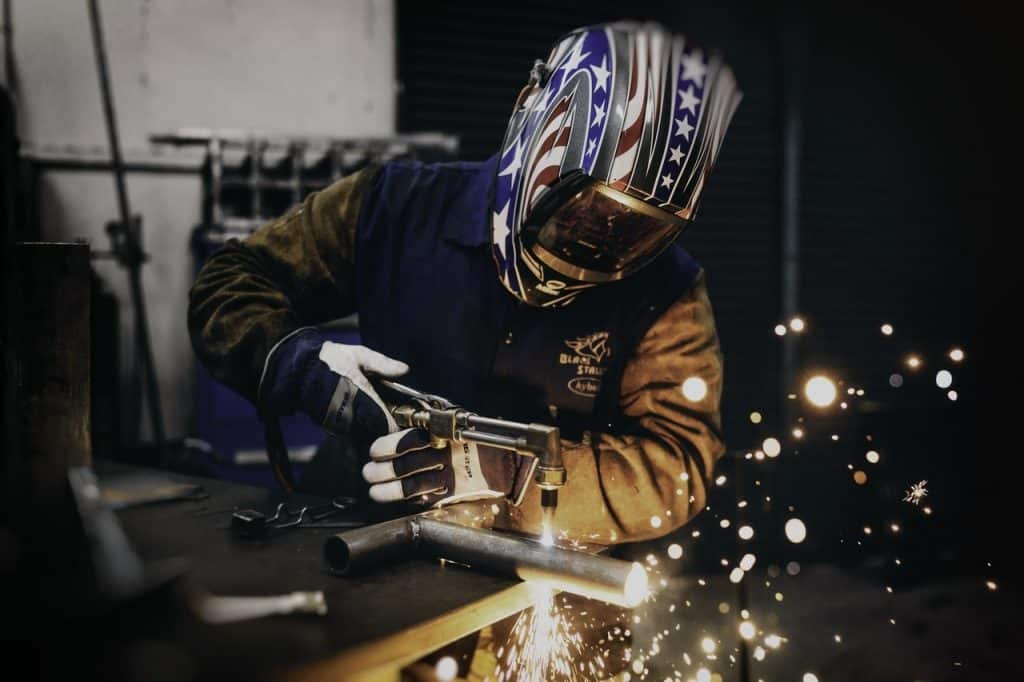Precision and care are required in metalworking, which is an art and science. Aluminum, brass, bronze, copper, steel, and titanium are among the most popular metals used in metalworking, although there are many more.
With sheet metal fabrication, you may bend or cut the metal into numerous forms to meet your specific requirements.
Using two blocks on each side, we will demonstrate how to bend a flat piece of sheet metal into a curved shape using a brake press at your local machine shop.
Engineers that specialise in metal fabrication may build anything from a bicycle all the way up to a full-fledged aeroplane.
Sheet metal fabrication is the process of cutting, bending, or welding metal sheets together to get the required shape.
In this essay, we'll go over some fundamental sheet metal fabricating methods for newcomers to the sector.
To understand the basics of metal manufacturing, go no further than today's blog article. Taking up sheet metal fabrication as a hobby may be both instructive and gratifying.
What tools are required, how to cut and bend your metal into forms and how to connect them together using rivets or screws will be covered in this tutorial.
Table of Contents
Basic Sheet Metal Fabrication Techniques
Solid freeform fabrication techniques (SFFT)
SFFT is shorthand for a wide variety of CAD/CAM processes, including 3D printing technologies like stereolithography, selective laser sintering, and ballistic particle manufacturing (BPM).
Since the local composition, macrostructure, and microstructure inside components can be determined and controlled with high accuracy using SFFT, polymer scaffolds with well-defined architecture can be fabricated.
It has been possible to use calcium phosphates as the bioactive phase in composites through this method.
The mechanical properties of the PLLA/TCP composites were found to be comparable to those of human cortical bone, and they were produced using a layer-by-layer manufacturing method with porosities of up to 90%.
To make PLA scaffolds, Taboas et al. (2003) used a combination of computationally generated pores (channels 500-800 m wide) and solvent-derived local pores (50-100 m)... However, this approach requires more time and resources to build the structure than do more direct methods.
How Do You Perform Sheet Metal Fabrication?

The following steps are typically covered in classroom discussions of metal fabrication.
Mastering each stage calls for specialised knowledge and skill, which in turn requires high-priced, industrial-scale machinery. An example of a metal production method that can be used for welding any metal is welding.
- Cutting. One of the most common processes in the metal industry is cutting sheets of metal in half, thirds, or smaller pieces. Metal used in many applications is freshly cut because it hasn't been shaped in any way. Pre-cut metals, such as bars and pre-measured panels, can also be used. The cuts are made using state-of-the-art tools like lasers and plasma torches as well as more intricate machinery.
- Folding. One of the trickiest processes in metalworking is folding, which entails shaping a metal surface to take on a specific angle. In certain circumstances, the metal surface must fold at a 90-degree angle to achieve a more or less blunt folding effect. This is why the folding process can only be performed in establishments with access to specialised, high-tech equipment. When a fold is necessary, it is often more practical to attach two metal panels at specific angles.
- Welding. Welding and cutting are both common metalworking hobbiest techniques. When two metal pieces are welded together, they form a single unit. You can use any metal sheet, panel, bar, or shape for your welding project. There are many methods and tools available for welding.
- Applying heat to both the joining places of the two materials is the most common way to create a weld. In the metal industry, many workers get their start by learning to weld.
- Machining is the practise of removing metal by mechanical means. Metal is turned on a lathe while cutting tools trim off excess material from the edges and corners to achieve the desired form or measurement. A hole or series of holes may be drilled all the way through a piece of metal during certain machining processes. Therefore, the metal drill could be classified as a machining tool.
- Punching. Holes are cut into metal using drills, which are pressed against the material by a die. The punch will not be the correct size unless the drill's circumference is the same as the die's diameter. A punch can be classified into one of two groups, depending on its intended use: Holes are often drilled into a metal panel in order to install latches or other non-native pieces. Sometimes the region containing the hole is purposefully cut out of the larger panel to produce a smaller bit component. This is referred to as "blanking."
- Shearing. Long cuts in metal sheets are best accomplished by shearing. Occasionally, the metal sheet is fed horizontally through the cutting machine. In various contexts, cutting tools are held vertically and used against the length of flat metal sheets. An alternative method involves using an open cutter, similar to those found in copy centres, by placing the metal over the edge and lowering the blade. Although shearing is typically used to reduce the thickness of a metal sheet's edge, it can be performed anywhere there is metal.
- Stamping. Making metal parts with a die isn't confined to the punching variety. In other situations, however, a hole is not the desired outcome, but rather the lifting of a section of metal sheet. A metal sheet or panel can be stamped to create a variety of shapes, letters, and images for these applications. This method is mirrored in metal stamping, much like it is in wood or marble relief carving. Printed text, numerical values, and images of former presidents adorn both sides of coins, a common example of metal stamping.
- Casting. Casting, in which molten metal is poured into a mould and allowed to harden into a precise shape, is one of the oldest methods of producing metal objects. Casting is one of the most adaptable metal manufacturing processes, allowing for the creation of complex shapes. When it comes to assembly components, for example, casting can be a viable alternative to more traditional methods of fabrication like folding, shearing, and stamping. Many different metals are used for this purpose, but some of the most common ones are steel, iron, gold, copper, silver, and magnesium.
Others include broaching, honing, grinding, and milling, all of which are used in the metalworking process. There are metal fabrication facilities that can make custom parts for specific uses.
What Items Are Manufactured Using Metal Fabrication Processes?
- Blinds. Leaf metals are used to make the blinds that keep out light and help keep interiors private. Leaf metals are sheared and folded to get the desired form and consistency.
- Cans. Tinplate or aluminium leaf metals moulded into a circular are used to make the cans that canned products are marketed in. Once the seam and the neighbouring bottom have been welded shut, they are subsequently clamped shut. The lid is soldered in place once the food item has been placed inside.
- Handles. They are constructed of metals such as nickel, silver, and brass that are cast, rolled or sheared into the required form. The manufacturing techniques for all types of openers, whether they have a straight or curved handle or a flat or ball-shaped knob, are intricate yet identical.
- Heaters. Some of the internal components and the housings of heating units are made of sheet metal.
- Locks. Door locks are among the most sophisticated non-electronic components in a home or building of any sort. It is necessary to die-cast the lock since the inner workings of the metal lock are built for a unique key form.
- Keys. Once the door lock has been cast, the key must follow. A lot of keys are made of brass, although nickel silver is a more durable metal for keys.
- Latches. There is a wide range of latch designs for use on houses, buildings, and fences, but they are all made from metal fabrication. Shearing and die casting are typical, although stamping, machining, and folding may also be used in certain designs.
- Pots. However, only the cooking pot so blatantly represents the casting process that it derives from a casting form full of liquid metal during manufacture. Few daily household objects.
- Silverware. At metal fabricating plants, the majority of utensils for eating are made from sterling or nickel silver, which is cast or pressed into form. Kitchen implements like whips, graters and openers are also subjected to the same technique.
- Fans. In spite of the fact that many of today's indoor fans are built of plastic and fibreglass, many versions still have metal casings.
- Chairs. It is common for a desk chair's legs and the supporting framework to be built of cast metal. Folding chairs, which have bars and panels constructed of cut and folded metals, show off the metal manufacturing processes more clearly.
- Hinges. Doors and cabinets' hinges are made of sheet metal that's been cut to size and pierced with holes for fastening. The barrel is where the folding process takes place, resulting in the hinge's fixed axis of rotation.
- Lamps. If a light fixture has a metal socket attached to a ceramic base, or if it has a metal body, it is manufactured entirely or in part of the cut, folded and cast metals.
- Faucets. Faucets are always composed of metal, while sinks may be built of a variety of materials. Generally speaking, faucets are cast, as are their handles and connecting elements. Appliances, in particular. With regard to kitchen and bathroom equipment like stoves, dishwashers and refrigerator trays as well as blender bases, pressing surfaces of a garment iron metal fabrication plays a major role.
- Tools. When it comes to making hand tools, metal fabrication methods including cutting, stamping, and casting are commonly used.
- Cables. Plastic covers the majority of the wires and cords that provide energy to gadgets and link computers to the Internet. Despite this, the workings of each cable/cord are due to the wires inside the plastic and the connectors and prongs that are made using a die.
- Sinks. Cast iron and steel sinks, unlike the vitreous china ones seen in bathrooms, go through a casting and folding process before being inserted into the countertop.
- Fasteners. Fasteners like screws, nuts, bolts, and occasionally rivets, all of which are by-products of the casting and stamping processes of metal production, hold the structural parts of a home or apartment structure together, whether they are made of metal or wood.

People are another important source of constant improvement in the fabrication process. There is a lot of dust and heat involved in "fabrication" procedures. Metal shavings, coolants, and lubricants are all over the place.
Parts might be rather hefty. The air is thick with smog and garbage. Concerns about safety are widespread. To make matters worse, machines are implacable. It doesn't even matter if they're using metal hands and other bodily parts since they're built to operate with metal.
They make a lot of noise. It's difficult to grasp the sheer volume generated by the fast punching of a quarter-inch sheet of metal until you've really done it.
The majority of a company's nasty, stupid, and hazardous labour occurs during the fabrication process.
What Tools Are Needed For Metal Fabrication?
When it comes to apprentices purchasing their own tools, there has been a lot of discussion in the last several months.
When it comes to sheet metal fabrication, there are a few essential equipments that every metalworker should have regardless of their degree of expertise.
An essential toolkit for everyone in this industry may be found here:
- An angle grinder with a cutting diameter of 150mm or more. If you operate in the metal fabrication industry, you'll need an angle grinder for cutting, grinding, and polishing various metals. Many wonderful cordless versions are now available, including many from Bunnings.
- Fasteners. Multiple metal sheets (usually aluminium) are temporarily fastened together using this ingenious gadget before the components are permanently linked. Think of it as a more powerful clothespin.
- Various discs for angle grinders. With this package, you may choose between superabrasives and standard abrasives, as well as cutting and finishing discs, and wire wheels. When buying grinding discs, keep in mind that a masonry disc should only be used on concrete, not steel.
- It was a piercing scream. Whether you're working on a straight or curved metal project, this tool can help. It's easy to attach with three holes, and the long handle provides you the force you need to cut stainless, mild, and aluminium quickly and effortlessly. As you may expect, this gadget is a constant presence in most fashion studios.
- Wire snippers. A good set of wire cutters for snipping frayed ends should be in the toolbox of any handyman.
- Hat that automatically dims. Sheet metal fabricators should invest in a reliable auto-darkening helmet for projects that need a lot of welding, and they may vary in price from $200 to $400, depending on the brand.
- Angle-detection devices. Stainless steel or high-grade aluminium angle finders are often used by sheet metal fabricators, hence a high-quality pair is generally suggested.
- Using a pair of scissors to remove the lenses. For us, safety always comes first. Large-scale sheet metal production operations are more likely to be prone to accidents. A good pair of cutting glasses may assist reduce the risk of injury in the event of a collision. You don't want to end up with a piece of steel lodged in your eye, so be careful.
Fabricated Metals Used In Product Making
When it comes to creating metal items, forming metal components for assembly is only one step in the process.
The next step is to take various pre-made pieces and create machinery, appliances, cookware, and other items. Assembly pieces may be sent to a factory or an individual craftsperson, depending on the task at hand.
Starting with one or more of the following materials is standard procedure for most projects:
- Metal that has been stretched and shaped. Metal is extended to provide the appropriate uniformity for machines and fixtures that need grated metal panels rather than solid ones. Metal sheets are sheared to create diamond-shaped holes on the surface, which are kept together by the mesh-like metal that remains after the cutting process. Once each sheet has been formed, the metal is efficiently stretched to its maximum size.
As a protective wall for machinery that need ventilation, such computers and heaters, expanded metal is often utilised.

Condominium and gated community fences and screen doors often have expanded metal panels.
In general, broader holes are prefered as a fence material, whereas smaller holes are preferable for panels on electronic equipment. The grating size on various sheets of expanded metal might vary.
When it comes to expanded metal, you may choose from a number of thicknesses as well.
- Metals that may be divided into sections. Sectional metals are often used in the building and engineering industries for a variety of purposes. Sectional metal refers to any prefabricated metal part that is intended to be assembled according to a set standard procedure. For example, a construction business would need structural frame panels of a certain length and breadth, which would be pre-fabricated for order from a building components supplier and would be standardised throughout the industry. Sectional materials include, but are not limited to:
- I-beam. A cross-sectional beam with an I-shape.
- Z-shape. The final letter of the alphabet in the form of a segmented piece.
- Bar. A metal plate with a rectangular cross section.
- Rod. A chunk of metal that is either square or round in cross-section.
The American Society for Testing Materials (ASTM) sets tight standards for the strength and composition of sectional metals.
- Metal that is flat. Construction and industrial assembly employ flat metal parts for a wide variety of purposes.
- Various thicknesses of flat metal are available as a raw material for fabrication. The gauge of the components might vary from a few millimetres to several centimetres. There are three basic types of flat metals:
- Metal in the form of a leaf. Foil metal is the thinnest kind of metal.
- Stainless Steel. The most common kind, with a typical thickness of less than 6 millimetres.
- Plaster of Paris. Thicker than 0.25 inches in diameter.
Ovens, refrigerators, and other domestic appliances often have side panels made of flat metals.
- Wire for the welding process. Metal strands are often bonded into thicker cords and offered on spools as a welding assist in the form of wire. During a welding process, the wire does exactly what it says on the tin: it holds two pieces of metal together. During the welding process, the wire is typically melted into the welded joint by the heat from the application. Metals used to make welding wire come in a wide variety of sorts and thicknesses.
Conclusion
Precision and care are essential in metalworking, which is both an art and a science. To achieve the desired form, metal sheets must be cut, bent, or welded together through the process of sheet metal fabrication. Polymer scaffolds with a clear structure are made using solid freeform fabrication techniques (SFFT). Computationally generated pores (channels 500-800 m wide) and solvent-derived local pores were used by Taboas et al. (2003) to create PLA scaffolds (50-100 m)... However, more time and materials are needed to construct the structure using this method rather than using more direct methods.
Metalworking is a multi-step process that includes slicing metal sheets in half, thirds, or smaller pieces, folding them, welding and machining them, and so on. Modern tools like lasers and plasma torches are used for cutting, and metal surfaces are folded to achieve a desired angle. Both welding and machining involve the removal of metal, but welding uses heat to fuse the two materials together while machining uses mechanical means. A metal panel can be punched to install latches or other non-native pieces, and then the area around the hole can be blanked to create a smaller bit. Metal products can be made in a variety of ways, including by shearing, stamping, casting, broaching, honing, grinding, and milling.
Stamping can be used to make a wide variety of shapes, letters, and images from metal sheets, while shearing is used to reduce the thickness of a sheet's edge. Casting is a versatile metalworking process that enables the production of intricate designs. Broaching is a manufacturing process used to create one-of-a-kind components.
Products like blinds, cans, handles, locks, and fans are all made possible by metal fabrication techniques. Tinplate or aluminium leaf metals are formed into a circular shape to create cans, while other leaf metals are sheared and folded to create blinds. Metals like nickel, silver, and brass are commonly used to make handles, and these materials can be cast, rolled, or sheared to achieve the desired shape. Locks are made from die-cast metal, while heaters use sheet metal. Plastic and fibreglass are used to make the blades, while metal is used for the housing in many models. Kitchen tools like whips, graters, and openers are also cast or pressed to shape using the same method as sterling or nickel silver used to make silverware.
Content Summary
- With sheet metal fabrication, you may bend or cut the metal into numerous forms to meet your specific requirements.
- Using two blocks on each side, we will demonstrate how to bend a flat piece of sheet metal into a curved shape using a brake press at your local machine shop.
- Sheet metal fabrication is the process of cutting, bending, or welding metal sheets together to get the required shape.
- In this essay, we'll go over some fundamental sheet metal fabricating methods for newcomers to the sector.
- To understand the basics of metal manufacturing, go no further than today's blog article.
- Taking up sheet metal fabrication as a hobby may be both instructive and gratifying.
- What tools are required, how to cut and bend your metal into forms and how to connect them together using rivets or screws will be covered in this tutorial.
- Basic Sheet Metal Fabrication Techniques Solid freeform fabrication techniques (SFFT)SFFT is shorthand for a wide variety of CAD/CAM processes, including 3D printing technologies like stereolithography, selective laser sintering, and ballistic particle manufacturing (BPM).
- Since the local composition, macrostructure, and microstructure inside components can be determined and controlled with high accuracy using SFFT, polymer scaffolds with well-defined architecture can be fabricated.
- Therefore, the metal drill could be classified as a machining tool.
- Shearing.
- Long cuts in metal sheets are best accomplished by shearing.
- Occasionally, the metal sheet is fed horizontally through the cutting machine.
- In various contexts, cutting tools are held vertically and used against the length of flat metal sheets.
- Although shearing is typically used to reduce the thickness of a metal sheet's edge, it can be performed anywhere there is metal.
- Stamping.
- Making metal parts with a die isn't confined to the punching variety.
- Casting.
- When it comes to assembly components, for example, casting can be a viable alternative to more traditional methods of fabrication like folding, shearing, and stamping.
- There are metal fabrication facilities that can make custom parts for specific uses.
- What Items Are Manufactured Using Metal Fabrication Processes?
- Once the door lock has been cast, the key must follow.
- Few daily household objects.
FAQs About Metal
And while different metal fabrication companies use different techniques, most rely on three basic processes: cutting, bending and assembling.
There are many types of fabrication techniques where the most common ones are cutting and machining, punching and drilling, straightening, bending and rolling, fitting and reaming, fastening, finishing etc.
Sheet metal fabrication is the process of turning flat sheets of steel or aluminium into metal structures or products, by cutting, punching, folding and assembling. Sheet metal can be cut, bent or stretched into nearly any shape, which is generally done by cutting and burning the metal.
ALWAYS wear heavy-duty gloves when handling sheet metal. Wear a respirator or dust mask to prevent inhalation of sheet metal dust. Never attempt to carry an oversized piece of sheet metal by yourself. Wash your hands thoroughly with soap and water after working with sheet metal (even if you wore gloves).
Shearing, Bending, Notching, Shrinking and Beading are some of the processes involved in sheet metal fabrication. Sheet metal fabrication tools are used specifically to form parts and components from sheet metal.

